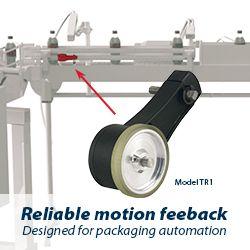WHOI Deploys Robotic Instruments to Monitor Red Tide
Woods Hole Oceanographic Institution has deployed a robotic instrument that will monitor red tide offshore Maine and carry out analysis on board, so people don't have to collect samples and manually process them.
The devices are called Environmental Sample Processors, and scientists operating off of research vessel Tioga deployed the first of two, with the second scheduled to be released later this spring. The deployments are set to last around 45 days.
"This deployment is a critical step towards our long-term dream of having a network of instruments moored along the coast of the Gulf of Maine, routinely providing data on the distribution and abundance of HAB [harmful algal bloom] cells and toxins. The technology will greatly enhance management capabilities and protection of public health in the region," says Don Anderson, Woods Hole senior scientist and the project's principal investigator.
The ESP collects a water sample and then tests it for DNA and types of toxins that target ocean life. The device is anchored to the ocean floor and suspended below a conductivity, temperature, depth sensor floating on the surface. It transmits images wirelessly to shore for onshore evaluation.
The two types of algae, Alexandrium fundyense and Pseudo-nitzschia, cause different types of shellfish poisoning in the Gulf of Maine. Scientist at Woods Hole would like the ESPs to become part of Maine's regional ocean observatory network, the Northeast Regional Association of Coastal and Ocean Observing Systems.
"The ESPs are not a replacement for state-run programs that monitor naturally occurring marine toxins in shellfish. Instead, they will provide valuable data on the phytoplankton cells and associated toxins in coastal waters giving managers a more complete picture of the magnitude and distribution of HAB events," says Kohl Kanwit, director of the Bureau of Public Health for the Maine Department of Marine Resources.
The ESP was originally developed by Monterey Bay Aquarium Research Institute President and CEO Chris Scholin. The ESPs deployed in the Gulf of Maine were manufactured by McLane Research Laboratories.
Featured Product

Model TR1 Tru-Trac
The Model TR1 Tru-Trac® linear measurement solution is a versatile option for tracking velocity, position, or distance over a wide variety of surfaces. An integrated encoder, measuring wheel, and spring-loaded torsion arm in one, compact unit, the Model TR1 is easy to install. The spring-loaded torsion arm offers adjustable torsion load, allowing the Model TR1 to be mounted in almost any orientation - even upside-down. The threaded shaft on the pivot axis is field reversible, providing mounting access from either side. With operating speeds up to 3000 feet per minute, a wide variety of configuration options - including multiple wheel material options - and a housing made from a durable, conductive composite material that minimizes static buildup, the Model TR1 Tru-Trac® is the ideal solution for countless applications.
